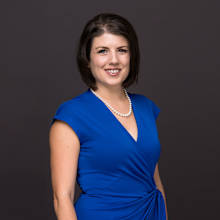New Teacher Classroom Environment Guide
Creating a pleasant and effective learning environment requires planning and resources. For a new teacher, resources depend heavily on the educational setting. This guide outlines potential resources by institution type. This page also explores strategies for covering new teacher expenses.
After earning an online education degree, many new teachers face similar challenges. The following sections answer common new teacher questions and provide ideas for classroom decor, supplies, and organization tools.
Classroom Environment
Factors impacting a classroom’s environment include the classroom culture and ethos, surrounding cultures, and the physical environment. A positive, supportive, and well-resourced classroom environment significantly improves student learning. An organized, warm, and welcoming physical classroom can help learners relax and focus.
Teachers support student learning by cultivating feelings of belonging, trust, kindness, and curiosity. Teachers should encourage students to ask questions, take risks, and work through challenges. Culturally relevant learning material, social skills-building opportunities, and clear goals and feedback also contribute to a good classroom environment.
School Resources
New teacher resources can help educators create optimal learning environments. Available resources depend heavily on the type of school. The following section explores resources available to public, private, charter, magnet, and virtual school teachers. Online resources also support aspiring, new, and experienced teachers.
Classroom Expenses
The following sections provide ideas for classroom decorations, supplies, and organization. Many items cost little and contribute significantly to a positive classroom environment. However, this is not a comprehensive list of new teacher expenses and supplies.
Educators often qualify for deductions, including educator expense deductions and state expense deductions. Eligible educators include K-12 teachers, instructors, and aides who work at least 900 hours per year at a state-recognized school. Principals and counselors also qualify for deductions.
Eligible educators may deduct up to $250 of qualifying, unreimbursed trade or business expenses. Teachers may deduct expenses over $250 as unreimbursed employee expenses. Qualifying expenses include computer and teaching materials, such as books, professional development courses, and supplementary supplies. Health and physical education teachers may deduct athletic supplies. Teachers in seven qualifying states can write off home-office expenses due to the COVID-19 pandemic.
Insufficient Resources
Public schools receive federal, state, and local funding. According to Education Week, state funds from state taxes and fees comprise about 48% of a public school’s budget. An additional 44% comes from local funding drawn from property taxes. Federal funding accounts for the remaining 8%.
Since the majority of public school budgets comprises state and local funds, schools in poorer states and districts tend to lack adequate funding. Teachers at poorly funded schools often have access to fewer educational modalities, technologies, and supplies. Students at underfunded schools usually have fewer opportunities and less support.
Teachers at underfunded schools may need to be more creative. If a school lacks textbooks, teachers may do more group work or write notes on the board. However, a lack of compelling classroom materials and learning tools often hampers teaching and learning effectiveness. According to the National Center of Education Statistics, more than 90% of teachers spend their own money on teaching supplies.
Interview With a Teacher
I vividly remember my first days in my new classroom. As I walked into the empty, sterile space, I thought to myself, “Wow, I never realized how much work it takes to build a functional classroom.” I distinctly recall the bare walls, empty desks, and clean tables.
I also remember feeling overwhelmed. My teacher-preparation program, though phenomenal at preparing me for lesson planning and the day-to-day classroom experience, really didn’t emphasize best practices for classroom preparation. I initially struggled with converting so much space into a welcoming environment. My classroom preparation consisted of many long days and nights, plus a ton of trial and error.
My initial focus as a new science teacher was on my classroom environment. I wanted students to walk into my classroom and feel like they were scientists who were ready to explore the world. So I bought science posters and made science-themed decorations by hand. A principal friend at another school graciously donated a mobile lab bench for my classroom. The space was sparkling, welcoming, and warm as new students arrived on the first day of school.
But I didn’t spend much time on my routines, procedures, expectations, or instructional process. On the first day of school, students filed in randomly, confused about where to sit. They were unclear on the classroom rules as they waited for me to pass out class materials.
I had no planned seating arrangement, with desks arranged in straight rows. There was no procedure for passing out papers or providing students with science materials, and I had no instructions or materials to support students. The next several weeks consisted of constant preparation iterations, which included creating a purposeful classroom space.
I added an entry table where students could collect paperwork and turn in homework, along with a dedicated science lab space in my non-lab classroom. I even created an observation space, where administrators could sit while observing lessons. I soon added a filing system for data collection, a bathroom check-out system for my high school students, and additional classroom stations for individual work.
Later still, I learned the value of planning classroom lessons in advance. I began focusing on lesson materials, demonstrations, models, and activities that I would need to design, build, or buy for my lessons.
The learning process for classroom preparation was stressful and expensive. As a new teacher who was excited to make a difference with my students, I jumped at every opportunity to improve my classroom environment. I constantly ditched old ideas, updated decorations, and tried new classroom-management and instructional strategies. Many required more initial setup than I thought.
In your first year as a teacher, you learn a lot about what works and what doesn’t. I recall experiencing a big learning curve after the “honeymoon” period of the first few weeks of school. By the spring, I finally started to get into the groove. By the following school year, I had a large repository of items I could pull from, plus new ideas based on my first-year experience.
Teaching science in a non-laboratory classroom required me to buy a lot of demonstration materials and equipment that could be safely used in a regular classroom setting. I was proud of the experiments and demonstrations I provided to students. During the first two years of teaching, I performed osmosis experiments, chemical reactions, force experiments, and phase-change experiments.
I built many demonstrations and experiments into mini-lessons throughout my curriculum. Initially, as a teacher of integrated physics and chemistry, I had a lot of ideas for exciting demonstrations. However, while the experiments and demonstrations were fun and exciting, I would argue that they were not the essential component to my success as a teacher.
My answer for the most important purchase may be quite surprising. All of the equipment, materials, and experiments I implemented enriched my classroom and engaged my students and were critical to deliver a well-rounded education. However, the most important purchase I made reshaped how I approached lessons.
I distinctly recall this moment. I taught students about chemical bonds and tried to explain how atoms gain, lose, and share electrons. Electrons exist in shells around the nucleus of an atom, and the students needed to understand how electrons would behave in the valence shells, or the outer shell, of an atom.
To my surprise, it was a difficult concept for many of my students to grasp. I needed something visual. Experiments didn’t work, because they didn’t show the reaction on an atomic level, and videos weren’t reaching my students. The models I found for sale didn’t demonstrate the concepts.
On a Friday after school, I began planning how to re-teach the concepts the following week and finally came up with a visual. I bought large poster boards in various colors and created my own large paper models of an atom. Individual pieces of poster board formed the valence shells, nucleus, and electrons. I built the details over the weekend, laminated each piece, and attached Velcro to each component.
I planned first how I would teach students to visualize each shell in an atom, and then I planned how to teach each kind of chemical reaction and the resulting ionic or covalent bonds. I planned the reactions and then practiced how to demonstrate electron behavior. The following week, as I introduced my silly handmade models, I recall thinking, “Yes! It is clicking! They are getting it!” As we manually pulled off electron shells after reactions and added electrons, each demonstration with my model further solidified my students’ ideas.
The materials I used were simple and inexpensive but highly effective. This demonstration was created with extensive planning and preparation. I followed up this demonstration with more hands-on activities, like using paper-plate models to create atoms. I recall at the end of that week feeling like I was the best teacher in the entire world. And, wow, the average test scores were higher than on any assessment I had administered, and they tested well above the other high school classrooms in this topic.
After an exhausting week, I remember thinking two things: “Great teaching takes a lot of hard work and planning, and you don’t always need expensive materials to teach well.” That experience completely altered how I planned for and designed lesson activities. It helped me consider which classroom purchases were and were not necessary.
I have seen ranges of $500-$800 cited as average out-of-pocket classroom expenses. For a new teacher that needs to fill a classroom, considering all the trial-and-error that comes with building your classroom space, I think that amount may be $1,000 or more. You can expect to initially invest several hundred dollars to fill your classroom space. Then, you will likely have ongoing monthly expenses tied to your classroom management strategies, lesson activities, and needs that arise throughout the school year.
I think that most schools would argue that they provide all materials necessary for instruction (or in some cases, require parents to contribute additional materials). I suppose that is correct in the strictest sense. You can always teach, even with limited resources. However, the reality is that sometimes the minimum budget allocation may fall short of your goals to be an effective teacher. More resources may be necessary to focus on student engagement, collaboration, and varied instructional strategies.
Expect your school to provide the bare minimum to instruct students. This includes items like computer paper, pencils, construction paper and markers, laminators, and poster paper. It may also include technology equipment like smart boards or document cameras, along with general items that would be useful in any classroom, regardless of content area or grade level.
Of course, schools provide minimum essentials for specialized content areas like art. Science teachers may receive chemicals and demonstration tools for lab experiments, and physical education teachers have access to equipment required for students to participate in physical activities. Schools may offer manipulatives or reading libraries for primary school teachers, while secondary school teachers may receive fewer hands-on materials and more texts and technology.
But generally, materials provided by the school are standardized and applied as equally as possible across the campus. Sometimes these resources do not meet the specific needs that you may feel are necessary for your classroom to be successful.
While your school may not immediately provide all the materials and equipment on your wish list, that doesn’t mean that you can’t request additional assistance. I have found that schools can sometimes find creative ways to provide resources, if you can demonstrate that those resources will help improve student learning. Present your school administrator with details on your lesson or unit plans, clearly tie your material request to your lesson objectives, and provide a solid rationale for how your request can improve student outcomes.
This can improve your chance of either receiving funds for your request or being reimbursed for some or all of your material expenses. Your school may have funds available from the parent-teacher organization, money set aside from past grants, or leftover funds in the general budget. Additionally, if you work in a school that utilizes title funds, some of this money may be allocated to your classroom.
The only way to know for sure whether your school can assist your individual classroom is to ask. I have found great success with this approach and seen similar success in many of the schools I have worked in since. When campus administrators see your plan to differentiate your instruction, provide more experience for students, or improve upon lesson activities, they can better visualize how your materials requests will translate to student learning.
When you provide a clear justification for how these materials can support your students and improve your classroom instruction, administrators are more likely to help you get the support and funds you need.
In my experience, private schools and charter schools have less wiggle room when it comes to materials budgets. However, they may have additional money from the parent-teacher organization, parent donations, fundraising events, and grants. Public charters and public schools and districts, especially those that serve low-income populations, tend to have larger overall student budgets. But they also need more materials to provide appropriate student services.
I have noticed that teachers in schools with more stable student populations tend to have decreased expenses. In contrast, schools with a lot of student turnover or changing student populations have increased costs. Each year, teachers may need to significantly modify lessons to support the varied needs of students.

Shayna Pond holds her teaching and principal certification in the state of Texas. She has worked with more than 100 Texas schools through school support and professional development. Each year, she serves thousands of teachers throughout the nation online. Shayna has 12 years of formal experience in education. She has four years of experience as a teacher and assistant principal in a Houston-area public school. For eight years, she has delivered interventions and training through her school support and professional development company, Model Teaching.
New Teacher Questions
Related articles that may interest you

Accelerated Online Associate Degree Programs
An accelerated associate degree lets students take an increased course load and graduate faster. Accelerated programs appeal to professionals looking to quickly increase their job options and salary potential. Military students and those seeking employment in healthcare or business may find particular value in accelerated degrees online. Earning a fast track associate degree online offers …

by Reese Lopez
Updated June 23, 2023

Best Master’s in Data Analytics Programs: What You Need to Know
Signs are pointing to data analytics becoming a game-changer for modern businesses. One survey discovered that 94% of companies believe data and analytics are crucial for their growth and digital transformation. In another survey, 92% of data leaders said they felt hopeful because data analysis helped their businesses grow and be more productive. According to …

